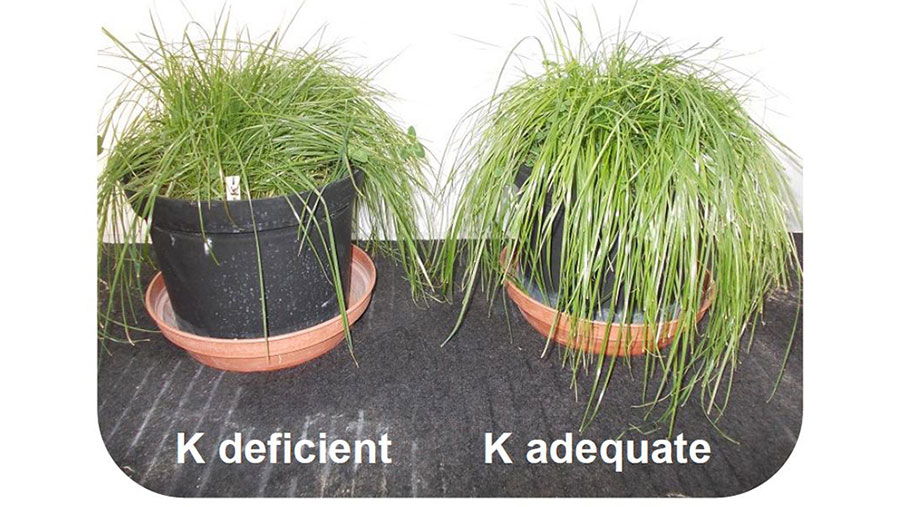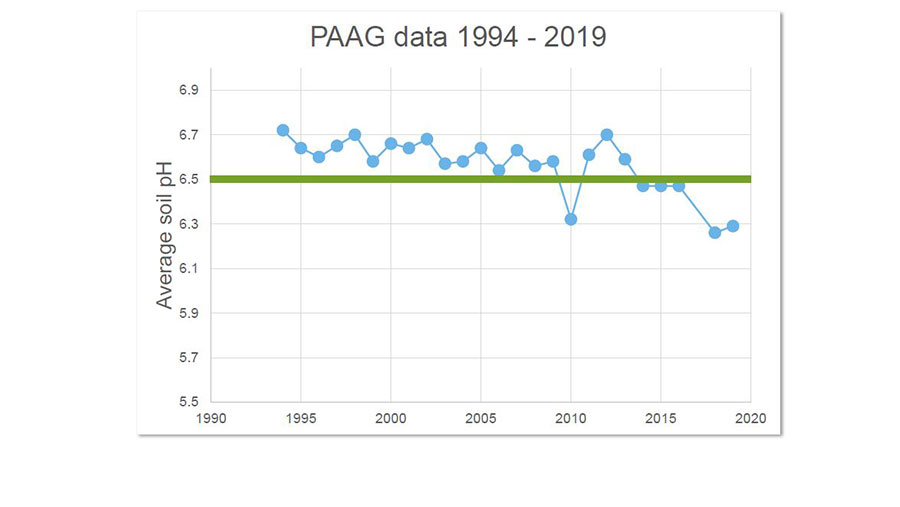Advertiser content
Nutrient management – are we getting the basics right?
On Thursday, September 8th, ICL UK’s agricultural conference entitled ‘Facing the Future’ highlighted some major challenges and opportunities facing farming today.
The focus was on effective nutrient management planning to improve efficiency, while maintaining both yields and quality.
Guest speaker Jon Telfer, a senior manager at Lancrop Laboratories, is an expert in analytical services and the interpretation of soil analysis data.
Ranging from 1994 – 2019, Jon looked at pH and nutrient levels in UK soils, and this prompted the question “Are we even getting the basics, right?”
Nine out of 10 soil samples show sulphur deficiency
Before the introduction of the Clean Air Act, sulphur was applied across UK farmland by atmospheric deposition via industrial and household emissions from the burning of coal.
However, over the past 50 years these emissions have been reduced to such an extent that the deposition of nutrient sulphur is now effectively insignificant.
Lancrop data showed that today, around 97% of UK soils are below the required levels of sulphur.
ICL agronomist, Scott Garnett, explains why a full spectrum soil analysis for sulphur is so important.
“Understanding your soil is critical for optimising nutrient uptake. Sulphur is essential for nitrogen use efficiency, along with potassium and phosphate. If your soil is deficient, inevitably there will be a limiting factor and impact on yield.”
The conference heard that 42% of grassland soils, especially those used for silage, were deficient in potassium and 32% fell short for phosphate levels.
“Large quantities of potash are removed in grass silage,” Scott explains, “so even more reason to make sure a full spectrum soil analysis is done every 2-3 years.”
Overall, the data revealed that only 9% of UK grass soils were on target for P and K, with one or both nutrients being potentially higher than necessary, or at least one being deficient.
Arable soils fared better with 51% on target for K, however the data showed that a quarter of UK soils are worryingly below target.
There was slightly better news for phosphorus levels, in arable soils at least; analyses showed the majority (59%) were not P deficient.
“Phosphate is required for establishment and Potassium plays a vital role in nitrogen metabolism,” Scott explains.
“Low levels of P and K will inevitably impact on quality and yield, and adequate levels will be harder and more expensive to reach, if neglected for too long. It’s not worth the risk in the long-term.”
The conference also heard that calcium levels are a concern. 1 in 3 grassland soils are calcium deficient, as are more than two thirds of arable soils.
Only 17% of UK soils in optimal pH range
Jon reported that soil pH levels have been dropping below the optimal range since 2014, with 51% of arable soils tested in 2019/20 falling between pH5.5 and pH6.4, and just 17% in the optimal pH6.5 – 6.9 range for arable crops.
ICL agronomist Scott Garnett explains the importance of soil pH to optimising yield.
“Soil pH levels correlate to the availability of nutrients in the crop. Therefore, if soils are not at the appropriate levels, growers can unintentionally limit their yield potential and reduce nutrient use efficiency.”
“A deficiency of any single nutrient is enough to limit yield”
So how do you ensure the right balance?
Jon recommended testing beyond the required basics of pH, P, K, Mg, and soil organic matter (SOM), and employing a test regime across the calendar, split into three periods:
- Pre-season planning
- In-season adjustments
- Post-season appraisal
During pre-season planning, he recommended having organic inputs tested because they are variable in composition.
Leaf testing identifies ‘hidden hunger’
In-season adjustments can be gauged via tissue leaf analysis as these are a more accurate test than trying to visually identify deficiency symptoms and can indicate deficiency earlier – hidden hunger – before visible symptoms are apparent.
Post-season appraisal enables farmers to see what went right and what went wrong. For example, Jon recommends grain testing to assess nitrogen strategy. If optimum grain N (feed wheat- 1.9%; milling wheat – 2.1%.) are consistently not achieved, N applications should be adjusted.
Analysing grain for P and K is relevant in the post-season appraisal as new research has shown that the critical level of P in winter wheat is 0.32%. Grain P with a level lower than this indicates crop P was sufficiently deficient to reduce yield.
Testing soil for microbial activity can act as the ‘canary in the mine’, indicating soil health issues early.
“Optimising crop nutrition starts, but doesn’t end, with the soil”
The conference concluded that going beyond the legislative basics of soil pH, P, K and Mg testing was recommended.
Grain and tissue testing to actively monitor and manage crops, rather than reacting to signs or risks of deficiency, is a much more accurate way to ensure nutrient sufficiency.
Thank you to Jon Telfer for being a speaker at the ICL ‘Facing the Future’ conference, held at Belton Woods, Grantham.
The event was attended by over 90 delegates including farmers, industry experts, supply chain specialists and agricultural journalists.
For more information please contact us:
ICL Sales UK & Ireland
Boulby Mine, Loftus
Saltburn. TS13 4UZ.
+44 (0) 1287 640 140
plantnutrition@icl-group.com
Provided by
ICL are experts in crop nutrition, such as Controlled Release Fertilisers (CRF). We are also market leaders in phosphate, potash and Polysulphate® based fertilisers. We offer high quality products to help farmers increase productivity, in a more sustainable way.



